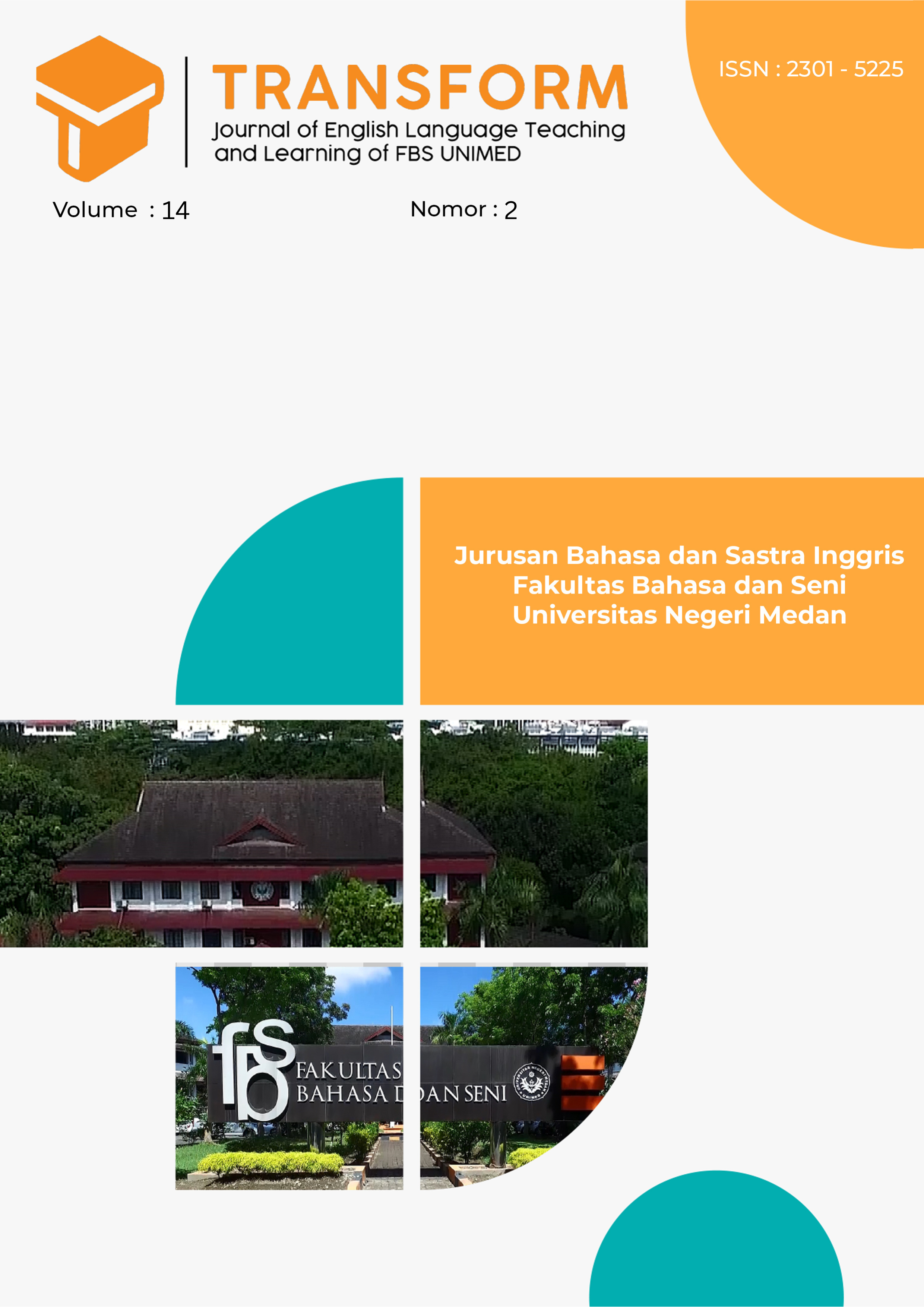Students’ Perception on Micro-teaching Course at English Education Department of UIN SUSKA RIAU
DOI:
https://doi.org/10.24114/tj.v14i2.67358Keywords:
EFL, Students' Perception, Micro-teaching CourseAbstract
The purpose of this research is to describe the students’ perception on micro-teaching and to determine students’ ability in micro-teaching course at sixth semester for students of English education department UIN Suska Riau. This research used quantitative design. The sample of this research were taken by random sampling. The population of this research is sixth semester students at the English education department of UIN Suska Riau. There were 26 students in total as the sample (20% from 126 students). In data collection, researcher used questionnaires and interview to collect data. The result of the research shows that the students’ perception on micro-teaching course is M=4.68 which is classified into very good category with students’ ability in teaching preparation is M=4.36 which is classified into very high level of category, students’ ability in preparation process (making RPP) is M=4.00 which is classified into high level of category, and students’ ability in explaining classified into enough level of category.References
Budiyasa, W. (2020). Analisis Kemampuan Menyusun RPP Kurikulum 2013 dan Kemampuan Mengajar pada saat Praktik Microteaching Mahasiswa Program Studi Pendidikan Biologi FMIPA IKIP PGRI Bali. 21(2), 487–499. DOI: 10.5281/zenodo.4048953
Chee, M. W. L., Hon, N. H. H., Caplan, D., Lee, H. L., & Goh, J. (2002). Frequency of concrete words modulates prefrontal activation during semantic judgments. NeuroImage, 16(1), 259–268. DOI: 10.1006/nimg.2002.1061
Creswell, J. W., & David Creswell, J. (n.d.). Research Design: Qualitative, Quantitative, and Mixed Methods Approaches.
Dewan Perwakilan Rakyat Indonesia. (2005). Undang-Undang (UU) tentang guru dan dosen nomor 14. Dewan Perwakilan Rakyat Indonesia, 2. https://www.google.com/url?sa=t&rct=j&q=&esrc=s&source=web&cd=1&cad=rja&uact=8&ved=2ahUKEwjWxrKeif7eAhVYfysKHcHWAOwQFjAAegQICRAC&url=https%3A%2F%2Fwww.ojk.go.id%2Fid%2Fkanal%2Fpasar-modal%2Fregulasi%2Fundang-undang%2FDocuments%2FPages%2Fundang-undang-nomo
Diana, N., Yunita, W., & Harahap, A. (2021). Student’ Perception and Problems in Learning English Using Google Classroom During the Covid-19 Pandemic. Linguists : Journal Of Linguistics and Language Teaching, 7(1), 10. DOI: 10.29300/ling.v7i1.4274
English, T., Mutmainnah, A. R., Dalle, M. B., & Rum, E. P. (2019). 50 Awalia Rhaodatul Mutmainnah Et Al/Student Perception Towards Microteaching Subject Student Perception Towards Microteaching Subject By the English Education Study Program of Makassar Muhammadiyah University. Jurnal Keguruan Dan Ilmu Pendidikan (JKIP) FKIP Unismuh Makassar, 6(1), 50–58.
Higgins, A., & Nicholl, H. (2003). The experiences of lecturers and students in the use of microteaching as a teaching strategy. Nurse Education in Practice, 3(4), 220–227. DOI: 10.1016/S1471-5953(02)00106-3
Istiq’faroh, N. (2022). The Profile of Students’ Basic Teaching Skills Through Blended Learning in Microteaching Courses During Covid-19 Pandemic. Jurnal Basicedu, 6(2), 2586–2596. DOI: 10.31004/basicedu.v6i2.2420
Journal of Gandaki Medical College-Nepal | Editorial Committee. (n.d.).
Kilic, A. (2010). Learner-Centered Micro Teaching in Teacher Education. International Journal of Instruction, 3(1), 77–100. http://search.ebscohost.com/login.aspx?direct=true&db=ehh&AN=48497470&lang=fr&site=eds-live
Nasution, T., Meliani, F., Purba, R., Saputra, N., & Herman, H. (2023). Participation Performance of Students’ Basic Teaching Skills in Microteaching. AL-ISHLAH: Jurnal Pendidikan, 15(2), 2441–2448. DOI: 10.35445/alishlah.v14i4.2307
Sadikin, A., & Yelianti, U. (2020). Persepsi Mahasiswa Biologi Terhadap Pelaksanaan Pembelajaran Mikro. Biodik, 6(1), 94–105. DOI: 10.22437/bio.v3i1.4582
Sugiono. (2016). Metode Penelitian Kuantitatif, Kualitatif dan R&D (Issue April)
Downloads
Published
How to Cite
Issue
Section
License
Copyright (c) 2025 Muhammad Rifki Hamim, Idham Syahputra

This work is licensed under a Creative Commons Attribution-ShareAlike 4.0 International License.
Authors who publish with this journal agree with the following terms:
- Authors retain copyright and grant the journal right of first publication with the work simultaneously licensed under a Creative Commons Attribution License that allows others to share the work with an acknowledgment of the work's authorship and initial publication in this journal.
- Authors are able to enter into separate, additional contractual arrangements for the non-exclusive distribution of the journal's published version of the work (e.g., post it to an institutional repository or publish it in a book), with an acknowledgment of its initial publication in this journal.
- Authors are permitted and encouraged to post their work online (e.g., in institutional repositories or on their website) prior to and during the submission process, as it can lead to productive exchanges, as well as earlier and greater citation of published work (See The Effect of Open Access).
- This work is licensed under a Creative Commons Attribution-ShareAlike 4.0 International License.








